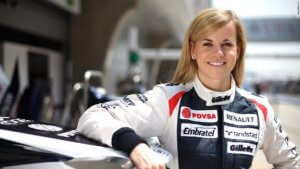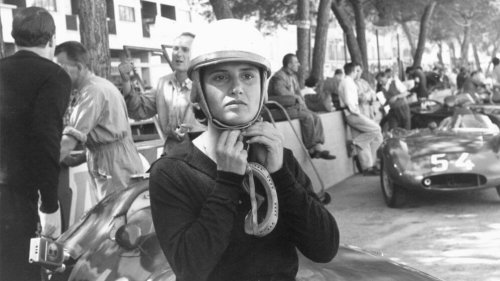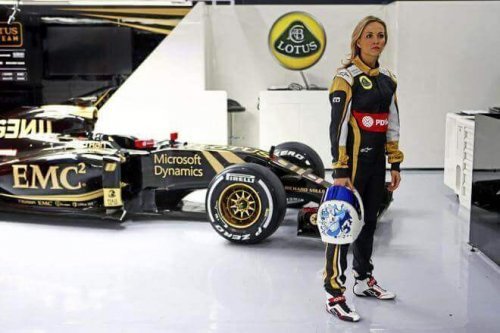Women in Formula One

Until recently, the participation of women in Formula One was scarce and rather auxiliary. That is, there were some women in the teams, but it wasn’t common to see female drivers competing, except on rare occasions. Above all, because women were considered to have a disadvantage from a physical point of view.
However, this is about to change thanks to the efforts of many activists. They have been responsible for conducting campaigns to show that in sports such as Formula One, gender is irrelevant and only determination, skill and preparation count.
Women can compete without any problems, both in an exclusively female competition and in a mixed one. The point is to create and promote the platforms so that they can also participate in this famous motorsport.
Fortunately, the participation of women in Formula One is no longer as controversial. Very soon, we’ll have a competition that will help women’s integration in major events.
Why are there no women in Formula One?
If we analyze the percentage of women in Formula One, it’s really low. Conversely, in the lower categories, women have been able to make their way, mainly in karts.
Questions such as when do women leave the competition? Why don’t women reach higher categories? Are very common at this point. Some drivers believe that it’s because there’s no assisted steering in the intermediate categories, so turning the wheel presents great difficulty. Additionally, it requires considerable force.
The truth is that it isn’t just about that. Money also plays a fundamental role, especially in terms of sponsorship and support.
The ten women drivers
So far, only ten women have managed to enter the demanding world of Formula One. Moreover, out of these ten women, only five have gone to compete in a race. The rest have been test drivers.
The pioneer of them all, is the Italian driver, Maria Teresa de Filippis. In the 1958 and 1959 seasons, she would compete in a total of five races and in three of them, she qualified to participate in the race.

Following her success, Lella Lombardi arrived in the seventies. She participated in more Formula One races than any other woman in history; a total of 17. She’s also the only woman to ever score.
Later, three other women competed: Divina Galicia, Desire Wilson, and Giovanna Amati. None of these women were able to qualify for any race.
There are other women who have managed to leave their name in history, such as Maria de Villota. The Spanish driver was, without a doubt, a promising female, but unfortunately, she had a fatal accident as a test driver for Marussia Motors.
Future promises
It’s more difficult for women to gain a place in Formula One. Despite this, there are still drivers willing to fight for their dream of being Formula One champions. Who knows if any of the following women will be the next starting driver:
- Tatiana Calderon: the 24-year-old Colombian driver is currently a test driver for the Sauber team. With a long career in GP3 and Formula 3, among other categories, she’s still struggling to gain a seat.
- Simona Silvestro: this Swiss driver has debuted in 69 races in the IndyCar Series, winning second place as her best result. Her dream is to reach Formula One, where she’s already taken a few test drives with the Sauber team.
- Marta Garcia: at the beginning of 2017, this driver was on the path of signing with the Renault Sport Academy program for young talents. Nine months later, the French brand decided not to continue in this program, so Marta Garcia’s future is uncertain.

A female championship?
Before disengaging from competition, Bernie Ecclestone showed support for a greater female presence in Formula One. He also proposed the creation of a women’s championship, consisting of six races in which the prize for the winner would be a Formula One test.
One solution that aims to end the inequality within this sport is the creation of a parallel Formula One championship, only for women. However, it’s a rather controversial proposal, given that not everyone is in agreement to promote a division between the sexes.
Despite this, many consider that a female lineup could be the first step to help drivers enter the great competitions on Formula One. Therefore, many expectations exist in relation to the newly created W-Series.
Until recently, the participation of women in Formula One was scarce and rather auxiliary. That is, there were some women in the teams, but it wasn’t common to see female drivers competing, except on rare occasions. Above all, because women were considered to have a disadvantage from a physical point of view.
However, this is about to change thanks to the efforts of many activists. They have been responsible for conducting campaigns to show that in sports such as Formula One, gender is irrelevant and only determination, skill and preparation count.
Women can compete without any problems, both in an exclusively female competition and in a mixed one. The point is to create and promote the platforms so that they can also participate in this famous motorsport.
Fortunately, the participation of women in Formula One is no longer as controversial. Very soon, we’ll have a competition that will help women’s integration in major events.
Why are there no women in Formula One?
If we analyze the percentage of women in Formula One, it’s really low. Conversely, in the lower categories, women have been able to make their way, mainly in karts.
Questions such as when do women leave the competition? Why don’t women reach higher categories? Are very common at this point. Some drivers believe that it’s because there’s no assisted steering in the intermediate categories, so turning the wheel presents great difficulty. Additionally, it requires considerable force.
The truth is that it isn’t just about that. Money also plays a fundamental role, especially in terms of sponsorship and support.
The ten women drivers
So far, only ten women have managed to enter the demanding world of Formula One. Moreover, out of these ten women, only five have gone to compete in a race. The rest have been test drivers.
The pioneer of them all, is the Italian driver, Maria Teresa de Filippis. In the 1958 and 1959 seasons, she would compete in a total of five races and in three of them, she qualified to participate in the race.

Following her success, Lella Lombardi arrived in the seventies. She participated in more Formula One races than any other woman in history; a total of 17. She’s also the only woman to ever score.
Later, three other women competed: Divina Galicia, Desire Wilson, and Giovanna Amati. None of these women were able to qualify for any race.
There are other women who have managed to leave their name in history, such as Maria de Villota. The Spanish driver was, without a doubt, a promising female, but unfortunately, she had a fatal accident as a test driver for Marussia Motors.
Future promises
It’s more difficult for women to gain a place in Formula One. Despite this, there are still drivers willing to fight for their dream of being Formula One champions. Who knows if any of the following women will be the next starting driver:
- Tatiana Calderon: the 24-year-old Colombian driver is currently a test driver for the Sauber team. With a long career in GP3 and Formula 3, among other categories, she’s still struggling to gain a seat.
- Simona Silvestro: this Swiss driver has debuted in 69 races in the IndyCar Series, winning second place as her best result. Her dream is to reach Formula One, where she’s already taken a few test drives with the Sauber team.
- Marta Garcia: at the beginning of 2017, this driver was on the path of signing with the Renault Sport Academy program for young talents. Nine months later, the French brand decided not to continue in this program, so Marta Garcia’s future is uncertain.

A female championship?
Before disengaging from competition, Bernie Ecclestone showed support for a greater female presence in Formula One. He also proposed the creation of a women’s championship, consisting of six races in which the prize for the winner would be a Formula One test.
One solution that aims to end the inequality within this sport is the creation of a parallel Formula One championship, only for women. However, it’s a rather controversial proposal, given that not everyone is in agreement to promote a division between the sexes.
Despite this, many consider that a female lineup could be the first step to help drivers enter the great competitions on Formula One. Therefore, many expectations exist in relation to the newly created W-Series.
This text is provided for informational purposes only and does not replace consultation with a professional. If in doubt, consult your specialist.








